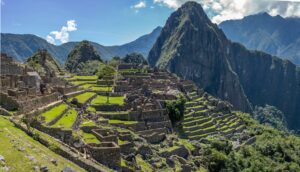Costa Rica is renowned worldwide for producing some of the finest coffees. With its ideal growing conditions, rich coffee history, and commitment to quality, Costa Rican coffee has earned a prominent place in the specialty coffee market. In this article, we will explore the factors that make Costa Rican coffee exceptional, including its history, growing regions, production methods, and the flavors that define it.
A Brief History of Coffee Beans in Costa Rica
Coffee was introduced to Costa Rica in the early 19th century, around 1779, when a coffee plant was brought from Cuba. At first, coffee was grown for domestic use, but by the mid-1800s, it became an important export crop. The Costa Rican government recognized the potential of coffee as an economic driver and began promoting its cultivation. By the late 1800s, coffee was the country’s primary export and played a pivotal role in the development of Costa Rica’s economy.
The country’s commitment to producing high-quality coffee dates back to this period, and it continues to be an essential part of Costa Rican culture and identity. Coffee is not just a commodity; it is an integral part of daily life in Costa Rica, where it is enjoyed in homes, restaurants, and cafés throughout the country.
Ideal Growing Conditions for Coffee Beans
Costa Rica’s geography and climate create the perfect conditions for cultivating coffee. The country’s volcanic soil, high altitudes, and tropical climate provide the ideal environment for Arabica coffee plants, which are known for their superior flavor profiles compared to Robusta beans.
Costa Rica’s coffee-growing regions are located in the central and western parts of the country, where the altitude varies between 1,000 and 1,600 meters (3,280 to 5,250 feet) above sea level. The cooler temperatures, combined with the rich, fertile soil derived from volcanic ash, contribute to the development of high-quality beans with complex flavors.
Additionally, Costa Rica’s consistent rainfall and dry seasons provide an optimal balance for the maturation of the coffee cherries, allowing them to ripen uniformly and develop distinct flavor characteristics.
Costa Rican Coffee Regions
Costa Rica is divided into several coffee-growing regions, each with its own unique environmental factors that influence the flavor profile of the coffee. Some of the most famous coffee regions in Costa Rica include:
- Central Valley: The Central Valley is one of the most significant and well-known coffee-growing regions in Costa Rica. This region includes areas such as San José, Alajuela, and Heredia. The high altitude and volcanic soil contribute to a coffee that is bright and well-balanced, with fruity and floral notes.
- Tarrazú: Considered one of the best coffee-growing regions in the world, Tarrazú is located in the southern part of the Central Valley. Coffee from Tarrazú is known for its exceptional acidity, medium body, and complex flavors, often with notes of citrus, chocolate, and red fruit. This region’s high elevation and cool climate create the perfect conditions for producing high-quality beans.
- West Valley: Located to the west of the Central Valley, the West Valley is another prominent coffee-producing area. This region is known for its smooth, balanced coffees with mild acidity and sweet, caramel-like flavors. The higher altitudes and the influence of nearby volcanoes give the coffee a distinct flavor profile.
- Guanacaste: The Guanacaste region, located in the northwest of the country, is another important coffee-growing area. This region is known for its more full-bodied coffees with lower acidity and earthy, nutty flavors. Guanacaste coffees are often less complex than those from Tarrazú or the Central Valley but are prized for their smoothness and rich taste.
- Brunca: This lesser-known region in the southern part of Costa Rica offers coffee that is often described as bold and robust with a full body. The Brunca region is growing in recognition, and its coffees are becoming more appreciated for their unique qualities, including earthy and chocolatey notes.
Coffee Production Methods in Costa Rica
Costa Rica’s coffee producers have long been committed to sustainable, high-quality coffee production. The country is known for its focus on Arabica coffee, which is considered superior in flavor to the more commonly grown Robusta coffee. Costa Rica’s dedication to quality over quantity has helped shape its reputation as a producer of premium coffee.
Costa Rican coffee is typically processed using one of the following methods:
- Washed (Wet) Process: The washed process is the most common method in Costa Rica. In this method, the coffee cherries are pulped to remove the outer fruit layer, and the beans are fermented to remove the mucilage before being dried. The result is a clean, bright cup with vibrant acidity and clarity. Many Costa Rican coffees, especially those from regions like Tarrazú, are processed this way, highlighting their crisp, fruity flavors.
- Honey Process: The honey process is becoming more popular in Costa Rica. In this method, the outer skin of the cherry is removed, but some of the mucilage (the sticky, sugary layer) is left on the bean during the drying process. This method results in a coffee with a sweeter, fuller body and more pronounced fruity flavors, while still retaining some of the clean characteristics of a washed coffee.
- Natural Process: While less common than the washed and honey processes, the natural (or dry) process is used by some Costa Rican producers. In this method, the whole coffee cherry is dried in the sun, and the beans are hulled once they have dried. This process tends to create a coffee with more pronounced fruity and earthy flavors but can sometimes result in a less clean cup.
Flavor Profiles of Costa Rican Coffee
Costa Rican coffee is celebrated for its clean, balanced, and flavorful profile. Thanks to the country’s commitment to quality and the ideal growing conditions, Costa Rican coffee often features the following flavor characteristics:
- Acidity: Costa Rican coffees are known for their bright, lively acidity, which is one of their most defining features. The high-altitude regions, in particular, produce coffees with a crisp, sparkling acidity, often with notes of citrus, berries, and apples.
- Body: Costa Rican coffees typically have a medium to full body, providing a satisfying mouthfeel. Coffees from regions like Tarrazú and the West Valley are known for their smooth, well-rounded bodies.
- Flavors: Costa Rican coffee often displays a wide range of flavor notes, from fruity and floral to chocolatey and nutty. Coffees from the Tarrazú region, for example, are famous for their bright citrus flavors and hints of red fruit, while coffees from the West Valley may offer caramel, chocolate, and nutty undertones.
- Balance: One of the most sought-after qualities of Costa Rican coffee is its balance. The combination of acidity, body, and flavor results in a harmonious cup that is both complex and easy to enjoy.
Costa Rican Coffee and Sustainability
Sustainability is a growing concern in Costa Rican coffee production. Many Costa Rican coffee farms have adopted organic and eco-friendly practices to reduce the environmental impact of their operations. This includes the use of natural fertilizers, composting, and reducing water usage in processing. Additionally, many farmers are involved in fair trade initiatives, ensuring that coffee producers are paid fair wages and have access to better working conditions.
Costa Rica is also home to several coffee cooperatives and certification programs that promote sustainable practices. Programs like the Costa Rican Coffee Certification Program (Sello de Calidad) and Rainforest Alliance certification help ensure that coffee is produced responsibly and with respect for the environment and the people involved in its cultivation.
Conclusion
Costa Rican coffee is a product of exceptional quality, shaped by the country’s favorable growing conditions, its rich coffee history, and a commitment to sustainability and innovation. From the bright acidity and fruity flavors of Tarrazú to the smooth, caramel-like profiles of the West Valley, Costa Rican coffee offers something for every coffee enthusiast. As global demand for specialty coffee continues to rise, Costa Rica will undoubtedly remain a key player in the coffee industry, offering some of the best and most distinct coffees in the world. Whether you’re sipping a cup in Costa Rica or enjoying it abroad, Costa Rican coffee provides an authentic and flavorful experience that reflects the country’s dedication to excellence.






